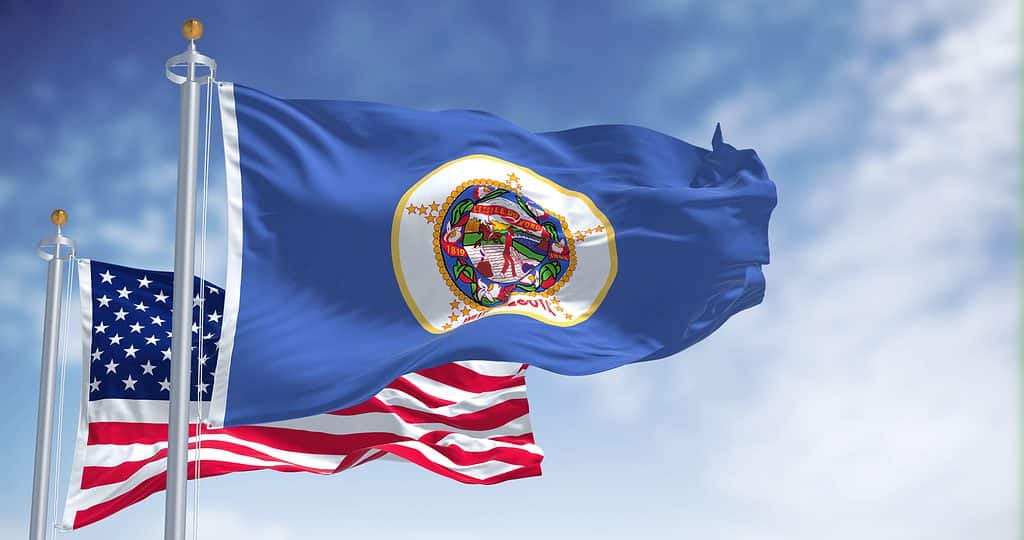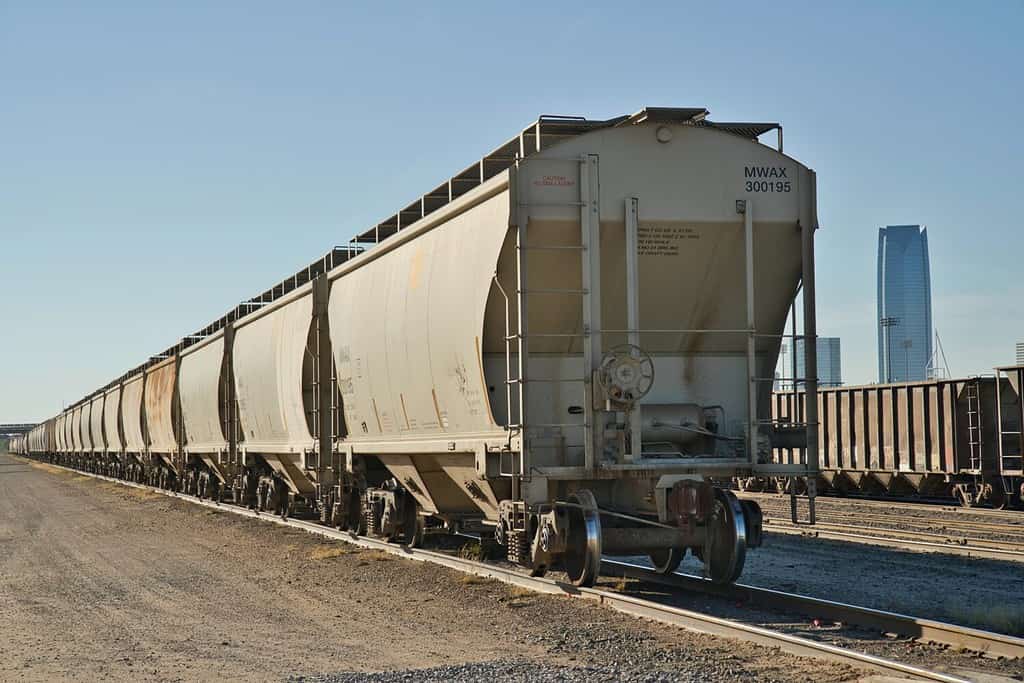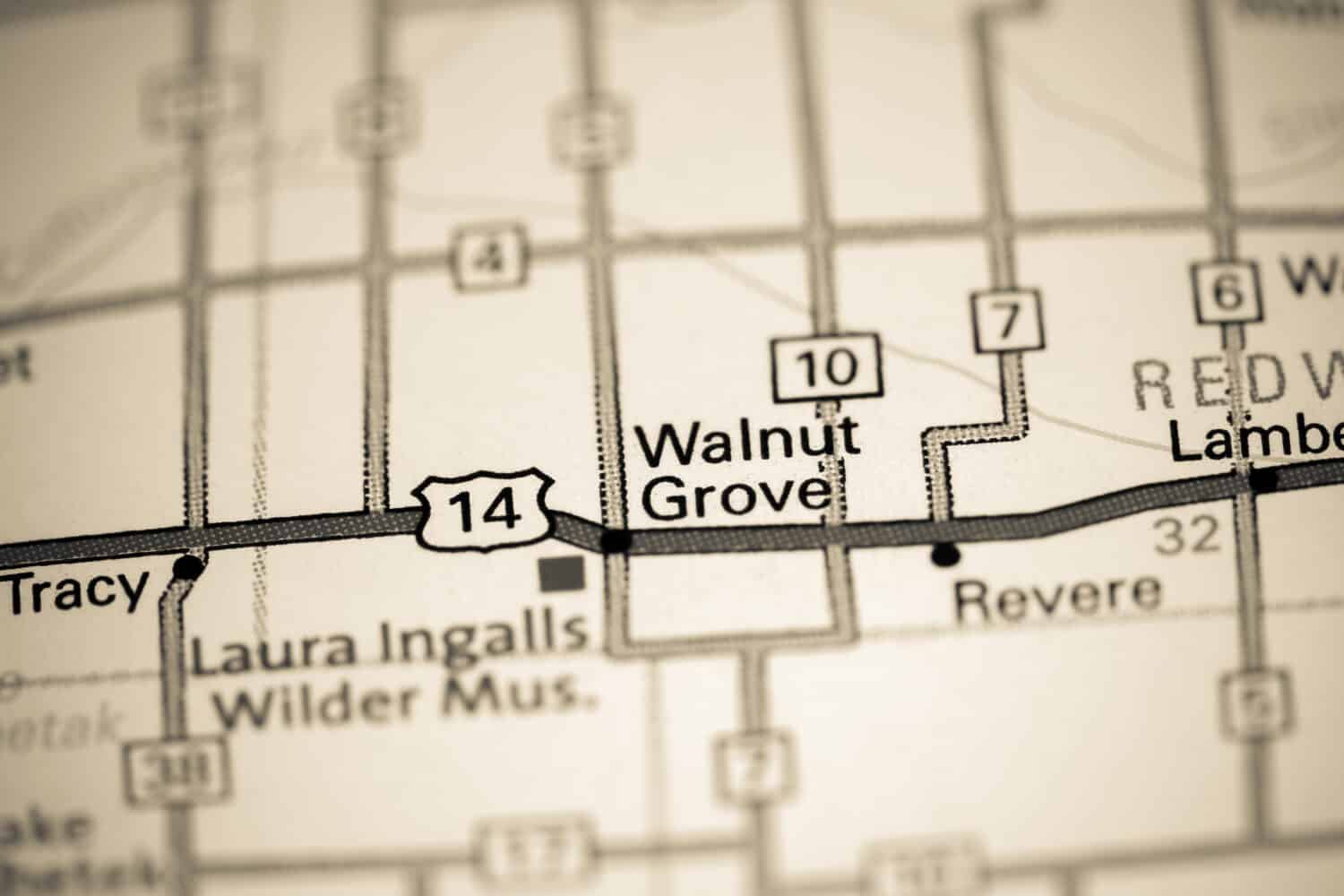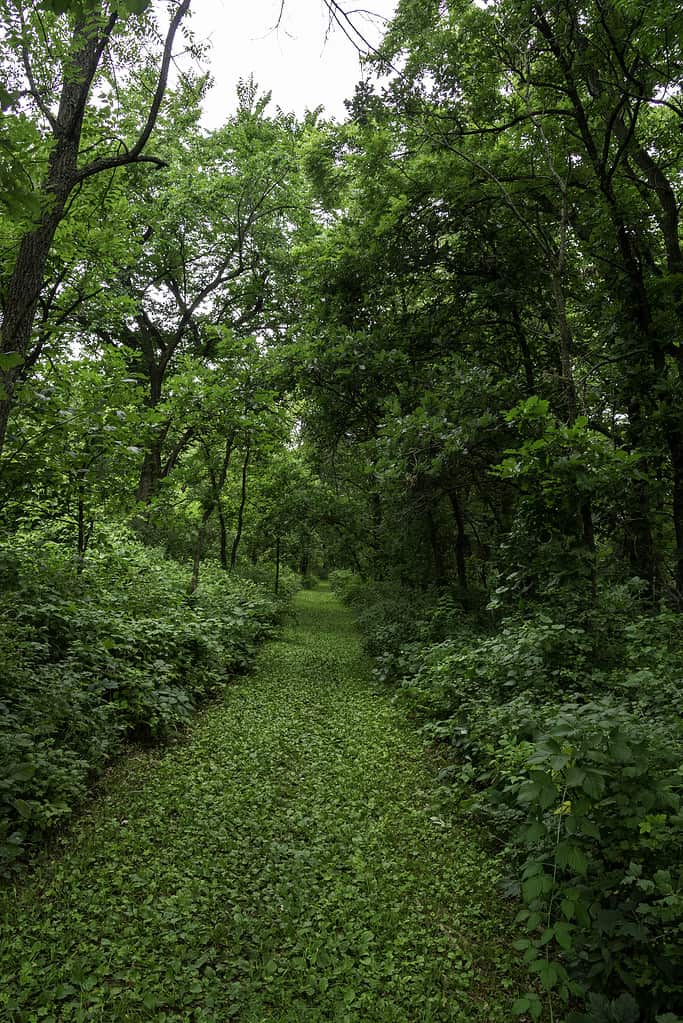Minnesota goes by a few nicknames — the Land of 10,000 Lakes, the North Star State, and the Gopher State. It’s the 12th-largest state in the country by area and the 22nd-most-populous. There are a few areas in Minnesota that just a few people or families live in. When it comes to the city you’re about to discover, its whole population could fit in a cargo van!
The smallest city in Minnesota is Kinbrae, with a population of 10 according to the 2020 census.
Kinbrae is in south Minnesota in Nobles County. The city includes 0.87 miles of land area and 0.14 miles of water area. We can gather a bit of information about Kinbrae from the limited U.S. census data. There’s a 100% homeownership rate in Kinbrae, so we can assume the residents all own their homes. There are 10 total housing units in the city and at least one family unit living there, as noted on the census.

The smallest city in Minnesota could fit all of its residents around a dining room table!
©rarrarorro/Shutterstock.com
History of Kinbrae
Despite its small size, Kinbrae has a pretty large history. The area first saw action in 1879 when the Southern Minnesota Railroad started building its route that ran from Heron Lake to Fulda. The company selected the area where Kinbrae is today to be the location of a rail station. The area was named Airlie after the president of the Dundee Improvement Company, David Ogilvy, the 10th Earl of Airlie.
As Ogilvy’s company worked to create the town of Airlie (Kinbrae), the nearby town of Dundee was also being built. Though the name may be misleading, the Dundee Improvement Company had no role in building Dundee. Dundee and Airlie were actually rival towns because they were built on two different rail lines.
After a hotel, general store, and a few other buildings sprang up in Airlie, it was surveyed and renamed DeForest in 1879. Four years later, DeForest was renamed for a final time to Kinbrae, which stands as the area’s name today.
Kinbrae has never had a really large population. It started with 19 citizens in 1880 and despite such small numbers, there was a strong movement to attract new residents. The owners of the town, W. N. Bickley and W. E. Fletcher built new businesses, and by 1896 the area had two general stores, two churches, a hotel, a bank, a hardware store, a blacksmith shop, and a school. All the construction led to an influx of new residents, and the city’s population reached its highest in 1900 at 137. It held at 137 in 1910 before dropping to 121 ten years later. After 1910, the population just kept on dwindling, dropping a few people each year until just 10 were left in 2020.

Kinbrae became a city because of the booming railroad industry in the 1800s.
©Andreas Stroh/Shutterstock.com
History of Nobles County
Nobles County includes Kinbrae, Adrian, Bigelow, Brewster, Dundee, Ellsworth, Lismore, Round Lake, Rushmore, Wilmont, and Worthington. It also has one census-designated place — Leota, five unincorporated communities, and 20 townships. The county had a population of 22,290 in 2020.
Nobles County isn’t much older than Kinbrae itself. It was originally inhabited by the Sisseton Sioux, and when European settlers arrived there was some strife between them and the native people. Joseph Nicollet was the first European to venture into what is now Nobles County, arriving in 1842. He came to the area to map it out and assign names to the lakes and rivers. After Nicollet mapped the area, settlers began moving in. The first settlement in Nobles County sprung up in 1846.
As the Europeans began moving further into Sioux territory, tensions rose and the Sioux retaliated. The Spirit Lake Massacre happened in 1857 when 35 to 40 settlers were murdered by a band of Sioux. This further discouraged settlers from moving into the area and likely contributed to its lower population rates. It wasn’t until 1857 that Nobles County was established, and it was organized in 1870, with a population of just 117.

Worthington is the seat of Nobles County and home to over half of the county’s residents. It’s south of Kinbrae and located just below Brewster.
©Jacob Boomsma/Shutterstock.com
Things to Do Near Kinbrae
Since Kinbrae’s territory is only about one square mile, there aren’t many things to do there. You could visit Kinbrae Lake, which spans a good portion of the city. It’s a fairly shallow lake at 7 feet maximum depth, but it holds a variety of fish including crappie, bass, pike, walleye, and perch.
Just outside of Kinbrae near Luverne is the Touch The Sky Prairie, an 808-acre tract of prairie. A Luverne native and world-renowned photographer, Jim Brandenburg started the project back in 2001. He worked with the U.S. Fish and Wildlife Service to restore the native prairie back to the land and recover what it looked like before farming. The area is managed by the U.S. Fish and Wildlife Service and is open for hiking, photography, and birdwatching. You can visit the prairie and view photos by Brandenburg at the nearby Brandenburg Gallery.
Head up the road to Walnut Grove, and you can experience life on the prairie at the Laura Ingalls Wilder Museum. The popular author of the “Little House on the Prairie” series wrote about the adventures of the Ingalls family on their farm in Walnut Grove. At the museum, you can see some old buildings including a little red schoolhouse, an 1898 depot, and the home of an early settler. You can learn more about Wilder, her family, and their real-life history of life on the prairie.

Around a 30-minute drive north of Kinbrae is the Laura Ingalls Wilder Museum in Walnut Grove, which features preserved historical buildings and stories about real life on the prairie.
©SevenMaps/Shutterstock.com
More Sightseeing and Fun Near Kinbrae
On the east side of Kinbrae near Lakefield is a beautiful state park worth taking a trip to. Kilen Woods State Park is right off County Road 24 and it offers miles of cool, woodsy hiking trails. It’s situated on the Des Moines River, so you can bring a canoe or go fishing. The trails are incredible and you can spot a bunch of native plants and trees in the park. There are also a few dozen campsites if you want to make a weekend out of it!
Painted Prairie Vineyard is right up the road in Currie and it offers some delicious wine tasting. The vineyard is a beautiful venue for weddings and private events. They have plenty of activities going on every month at the vineyard, with October’s calendar featuring a corn maze, live music, crafts, and trivia on certain days.

With views like this, it’s clear why Kilen Woods State Park is such a popular place to visit!
©dosecreative/iStock via Getty Images
Wildlife in the Area
While you’re out and about in nature, you may run into some of the native animals. Deer, foxes, porcupines, minks, raccoons, skunks, weasels, and squirrels roam about the southern portion of Minnesota freely. More dangerous animals, including black bears and moose, are primarily found in the northern region of the state.
In the early years of Nobles County, the entire area was mainly prairie and wildflowers. Because the area was so untouched, the animal populations were plentiful. Records note large populations of ducks, wild geese, pelicans, prairie chickens, brant, and curlew. As the county grew the animal populations decreased, but there are still many of these animals in Nobles County today. The two lakes in the area, Kinbrae Lake and Kinbrae Slough contain a few species of fish, most notably bass, crappie, and perch.
Now that you’ve read about the smallest town in the state, take some time to check out the largest cities in Minnesota! The Land of 10,000 Lakes offers plenty of excitement, from its smallest city to its largest!
The photo featured at the top of this post is © Jacob Boomsma/Shutterstock.com
Thank you for reading! Have some feedback for us? Contact the AZ Animals editorial team.







